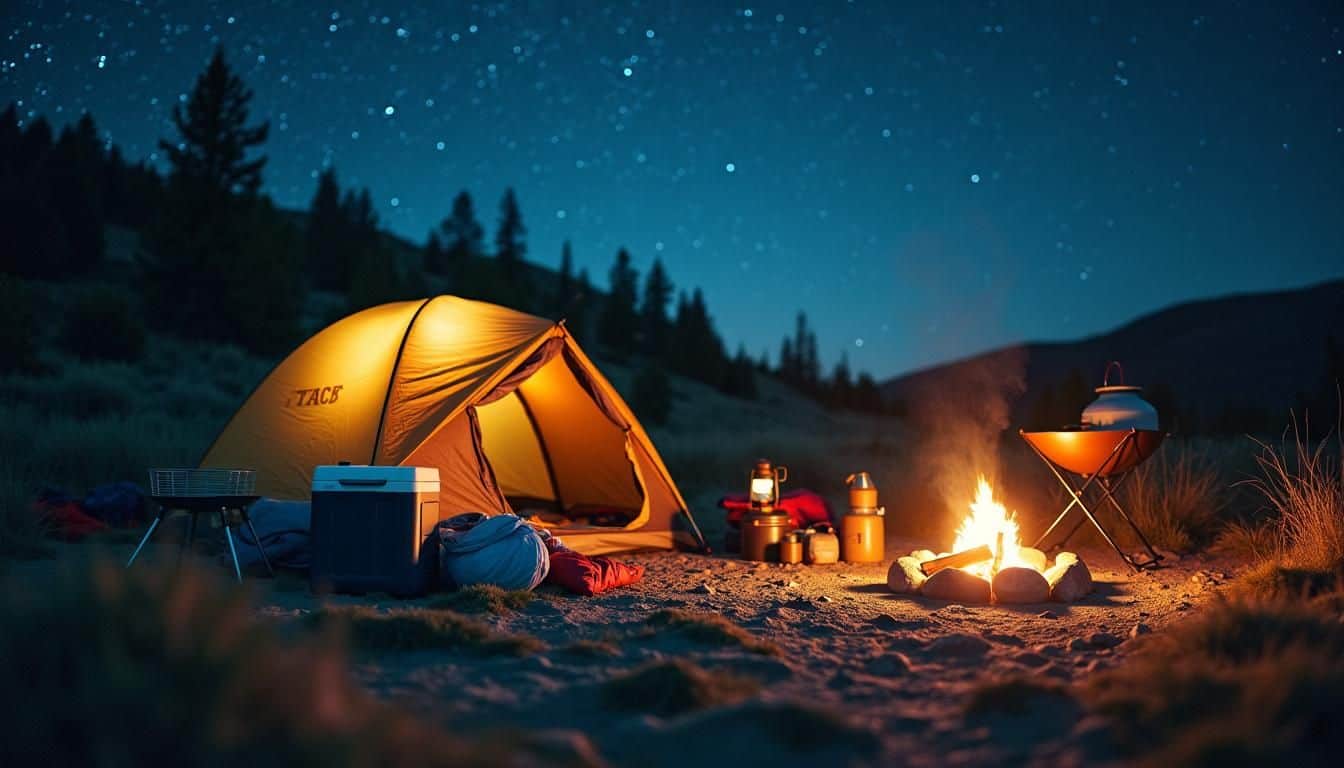The anticipation of an upcoming camping trip is equal parts exciting and nerve-racking as you plan for every variable. The stress can escalate when planning for a trip with your family. Each family member’s needs will vary based on their age, interest level, and camping experience.
Whether you’re planning an off-grid excursion or are heading to your nearest campground, you’ll need a few core items. One such item is lighting, which fulfills an essential safety need and can add to the enjoyment of your trek. For your next family camping trip, you’ll want a mix of lighting that enhances safety and is practical and durable.
1. Consider Your Camping Crew
The tone of your camping trip will shift based on its participants. A young family toting toddlers on their backs will have different needs than those with tweens or teens. Similarly, a multi generational camping crew will need to consider a wider range of needs. Before you start shopping for lighting, take an honest assessment of who is joining you on this trip.
Talk with each family member about what they’re looking forward to and anything in particular they’re hoping to experience. Resist the urge to make assumptions, as doing so may result in challenges at your campsite. For example, you may expect your young teen to be excited to hike and explore the caves, donning headlamps. However, they may be most interested in a more low-key trip or spending more time by the waterside.
The size of your group will also influence your overall camping plan and lighting strategy. A larger camping group will have more variability and coordination requirements than a foursome. Write down your findings and establish an illumination plan that meets the needs of your campers.
2. Assess the Campsite and Surrounding Grounds
The location of your camping trip is one of the biggest factors for your lighting plan. The overall location, campsite, and potential activities will determine what lighting is needed and what is irrelevant. If you’re staying at an established campground with electric hookups and restrooms, you have more options. A camping trip in this type of setting may include little to no nature, exploration, or hiking. In this situation, you may plan to spend more time around the campsite, making ambient lighting more relevant.
Battery-powered or plug-in string lights can illuminate tent interiors, providing both function and beauty. If you have an electric hook-up, a power strip, and an extension cord ensure flexibility when setting up your camp. If you’re going off-grid, you’ll need to pack the most powerful and long-lasting options you can. Shop for high-quality, reliable, and durable options with field testing to back up their quality claims. The last thing you want is to be miles away from civilization without power or a backup plan.
3. Plan for the Time frame of Your Trip
The length of your trip will guide your total camp plan, from gear to food, and of course, lighting. Assess the battery life of your lighting and battery charge packs to extrapolate how long you can last. Determine if your existing equipment has low power options and how much time you can gain with different power modes. This is an essential part of planning a safe trip, especially when your campers’ experience and comfort levels vary.
Younger children may have sleep habits that require nighttime illumination. If they are unable to go without this creature comfort while camping, you’ll need to plan accordingly. You may determine that bringing the kids’ rainbow light is not essential or safe for your trip. If so, you might want to pack glow sticks or solar-charged items to help them feel comfortable at bedtime. This additional consideration can help make your camping trip more enjoyable for the kids and more peaceful for the adults.
4. Determine the Needs of Your Adventure
Get out the maps and plan your adventure from start to finish. Walk through your entire camping trip from the day of departure to final pack out. This process will help you envision each milestone of your trip and can reveal gaps in your plan. Even if you’ve camped at this location before, each experience is different. Your camping group, even if made up of the same people, has learned and grown since the last time.
The time of year will influence the weather and flora, and fauna at your site. Additionally, the real-time weather outlook will guide what equipment you’ll need and what activities may be feasible. While most campers are open to varied weather conditions, camp setup in a downpour with young kids can pose challenges. Have a clear picture of what you’re heading into to ensure your plan is flexible and ready for any curve ball.
Keep Your Campsite in Clear View With the Right Illumination
Part of the magic of camping is seeing the dark night sky in clear view. However, maintaining visibility of your campsite, campers, and surroundings is a safety requirement. Bring a range of lighting options on your next trip for community and individual use. Outfit each camper with USB rechargeable headlamps and lanterns in case you become separated or another’s bag is compromised.
By distributing your lighting across packs, you can preserve your illumination and maintain safety throughout your journey. Pack extra batteries, charging cords, and backup solar lights to prepare for the unexpected. Prioritize efficient gear that uses LED technology, which lasts longer and often offers low power to preserve energy. Choose lightweight and compact lighting for easier packing, and keep backup batteries and cords organized and accessible. A well-outfitted pack is a safe pack, and quality lighting is essential for every family member’s camping gear.
